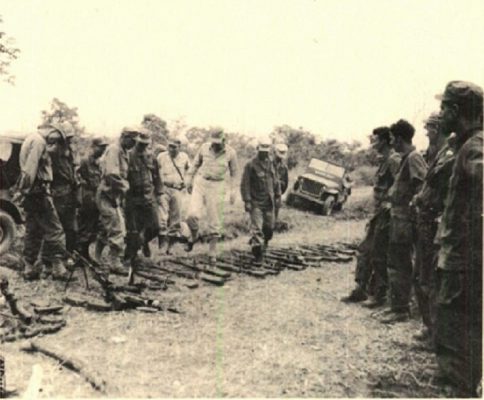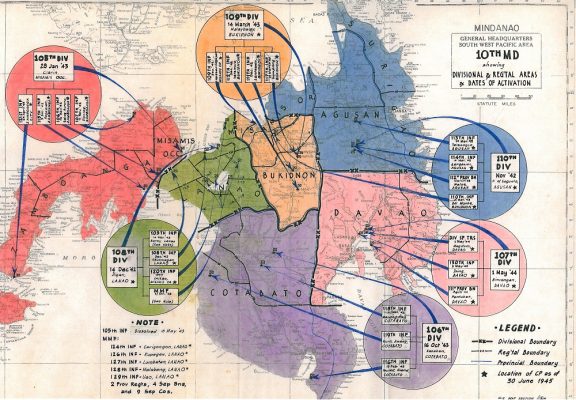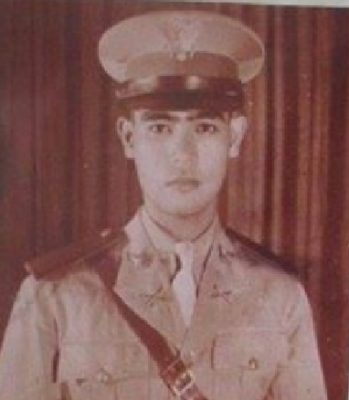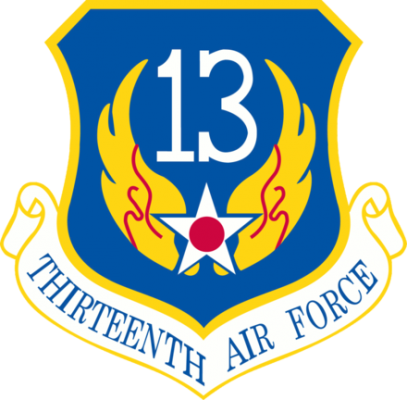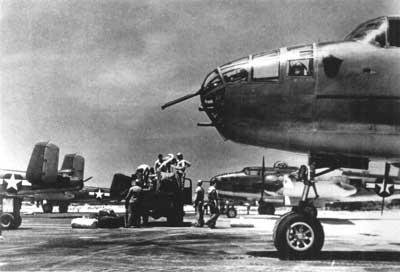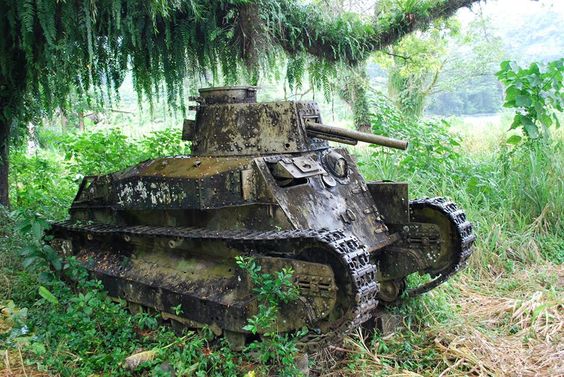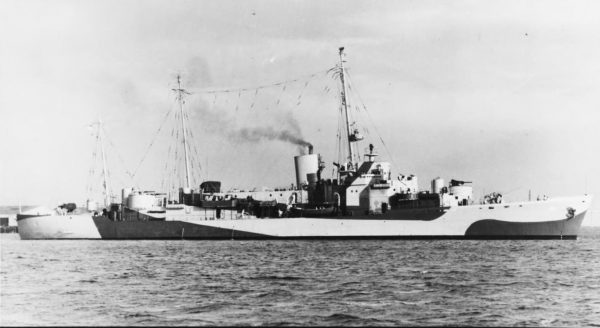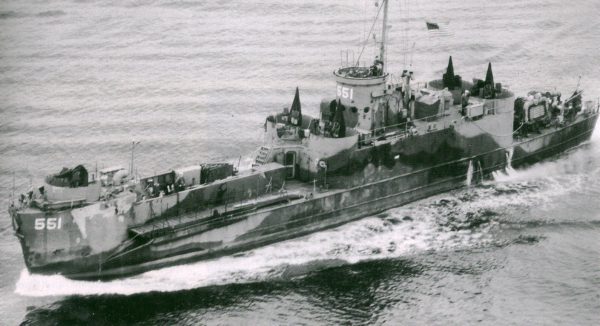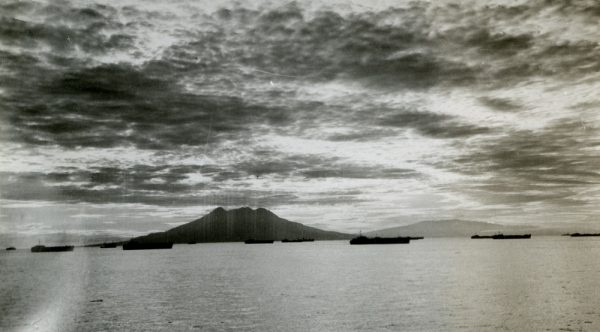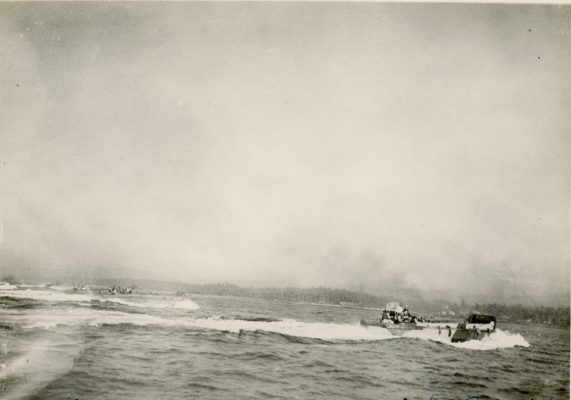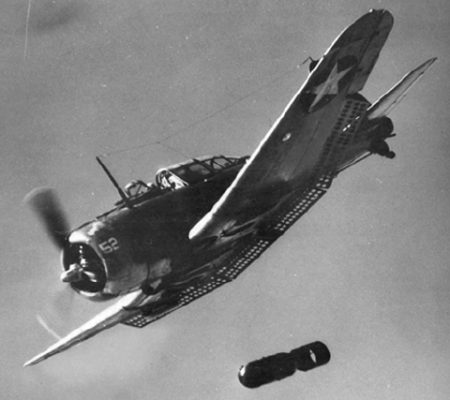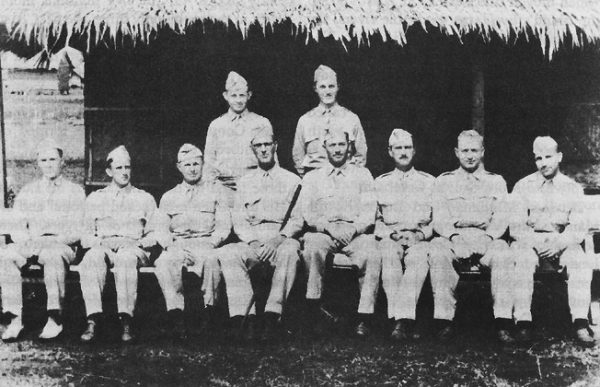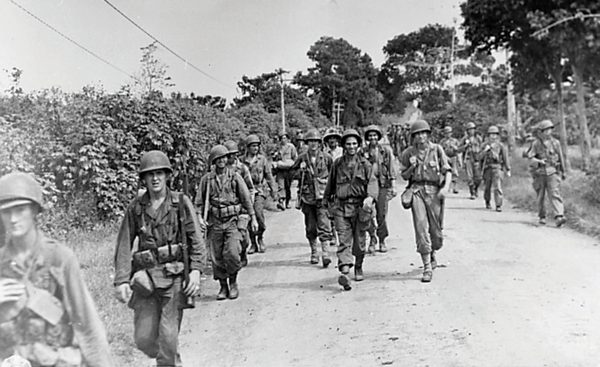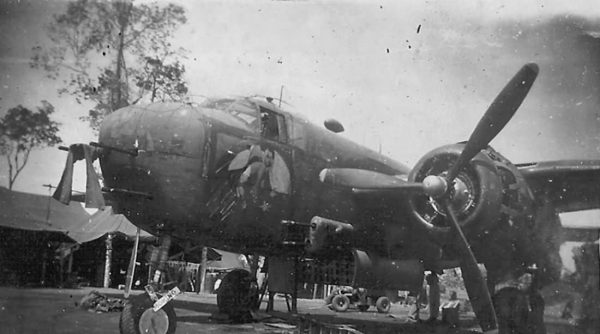
Prelude to Cagayan’s Liberation:
The Tagoloan-Bugo Operations 27 April -09 May 1945
(We are presenting the following story of the prelude to the Liberation of Cagayan, Misamis on 12 May 1945, in commemoration of its 75th Anniversary so we can remember those who sacrificed and paid the ultimate price that we may enjoy freedom as a democratic republic. Mabuhay!)
Before the Liberation of Cagayan, Misamis on May 12, 1945 by local guerrillas of the 10th Military District, preliminary operations were already being carried out at the Bugo-Tagoloan areas in coordination with US Army X Corps.
Late in April, when it became apparent that the Japanese Imperial Army (IJA) was planning to consolidate for a final stand in the hills northwest of Davao. Lt. Gen. Richard L. Eichelberger, commanding general, 8th Army, decided to land a regimental combat team at the rear of the enemy in the Macajalar Bay area of northern Mindanao.
This force would drive down the Sayre Highway to meet the 31st Division advancing from the south. The 108th Regimental Combat Team of the 40th Division from Leyte was selected for the operation.
Prelude to Macajalar Bay Landing
But even before that, Col. Wendell W. Fertig, commanding officer of the 10th Military District, had already been authorized by Maj. Gen. Franklin C. Sibert, commanding officer of the X Corps, to eliminate the Japanese forces at the Bugo-Tagoloan area. Fertig ordered the 1st Battalion (Bn), 110th Infantry Regiment, 110th Division to undertake the mission.
The 110th Division garrisoned portions of Misamis Oriental east of the Tagoloan River and the provinces of Agusan, Surigao and Davao. Activated on November 20, 1942, it consisted of the 110th, 113th, 114th and 30th Infantry Regiments. The division had 317 officers and 5,086 enlisted personnel.
It was commanded by Lt. Col. Edward Ernest McClish with headquarters at Medina, Misamis Oriental, which was later moved to Buenavista, Agusan (when it was still one province.)
McClish was a Native American of the Choctow tribe from Okmulgee, Oklahoma, who was called to active duty in the National Guard on 1940 and sent to the Philippines, where he commanded a company of Philippine Scouts. He organized one of the first guerrilla units in 1942 that later joined the 10th Military District under Fertig.
The 110th Infantry Regiment headed by Maj. Rosauro P. Dongallo, Sr. covered the area from Tagoloan River to Lenugos (present day Magsaysay), Misamis Oriental with headquarters at Balingasag, Misamis Oriental.
The 110th Regimental staff under Dongallo included Capt. Clyde Abbot (Executive Officer); Capt. Benjamin Pacana (Adjutant, S1); Lt. Fabian Villaroya (Intelligence, S2); Lt. Ireneo Villano (Plans & Training, S3); Lt. Papias Tiro (Finance Officer); Dr. Julian Tolentino (Regimental Surgeon); and Alfredo Hojas (Food Procurement Officer).
The company commanders included Capt. Benjamin Hernandez, Capt. Fernandez, Lt. Emeterio Moreno, Lt. Nilo Moreno, Lt. Jose Docdocil, and Lt. Atilano Labuntog.
Dr. Gerardo Sabal was the 3rd Battalion medical officer stationed in Sta, Ana, Tagoloan.
During a later reorganization, Dongallo handpicked the following officers, assigned them to responsible positions and assigned to strategic areas of the 110th Regiment: Lt. Eustaquio Carpio, Eustaquio Embate, Felino Pangilinan, George Ramos, Realino Edquila, Benjamin Valmores, Natividad del Pilar, and Bonifacio Pailagao.
The ‘Eastern Front’
At 1700 Hrs on 27 April 1945, battalion units crossed the Tagoloan River and occupied Tagoloan and Baluarte without any opposition. Earlier, enemy positions were bombed by B-24 Liberators and B-25 Mitchell bombers. [1]
Patrols were sent out to look for the enemy but found none. However, later six Japanese were killed in an encounter with no guerrilla casualties when they attempted to escape by fording the Tagoloan River at Nabulod.
On 28 April 1945, troops of “A” Co., 1st Bn, ambushed an enemy patrol while on combat patrol towards Kimaya, at Tacpon, in the vicinity of Sta. Ana, inflicting 25 enemy casualties. The enemy patrol was on a foraging mission from Claveria. The remaining Japanese dispersed in twos and threes but were hunted down.
On the same day, four more enemy stragglers were cornered and killed in action (KIA) by “A” Co. troops at Inablayan.
The 2nd Bn was ordered to pull out on 01 May 1945 to reinforce the 1st Bn at Tagoloan River perimeter. The 1st Bn perimeter ran from Sabaya to Tagoloan Ferry, with the 2nd Bn securing the perimeter from Ferry to Balacanas.
On the same day, Japanese troops re-occupied Tagoloan and Baluarte.
The Strafers came calling
In the following days, American B-25J Mitchell and PBJ-1 (the US Marines variant of the same aircraft) medium bombers strafed and bombed Tagoloan, Natumulan and Maliba.
Many post-war readers of this account may wonder why the Japanese soldiers kept clearing out of Tagoloan and Baluarte even before the guerrillas attacked. Credit should be given to the low-level bombing attacks of the North American B-25 “Mitchell Medium Bomber.
The B-25J-2 “Strafer” was especially a fearsome weapon. The factory made available kits to the Air Depot system to create the strafer-nose B-25J-2.
This configuration carried a total of 18 .50 caliber (12.7 mm) light-barrel AN/M2 Browning M2 machine guns: eight in the nose, four in the flank-mount conformal gun pod packages, two in the dorsal turret, one each in the pair of waist positions, and a pair in the tail – with 14 of the guns either aimed directly forward, or aimed to fire directly forward for strafing mission, giving the plane a battery of 14 .50-caliber machine guns with a total throw weight of about 215 pounds per second. One version of the late-model B-25J had 18 forward-firing machine guns.
By the end of the war, the B-25 was the most heavily armed aircraft in the U.S. Army Air Forces’ inventory. A single 12-airplane squadron of B-25s carried more .50-caliber machine guns than four infantry regiments!
No wonder the Japanese would hastily hot foot it out of the areas every time the “Strafers” dropped by to pay a visit.
Clearing the beach head
On 07 May 1945 the 1st and 2nd Bns were ordered to prepare to cross the Tagoloan River and proceed to beach areas of the shoreline from Baluarte to Bugo to form a beach head for the expected American landing and clear the rear areas of Japanese.
At 1700 HRS the next day 08 May 1945 the two units crossed the Tagoloan River and re-occupied Tagoloan and Baluarte without any opposition.
By the next day 09 May 1945 patrols made a three-pronged attack on the Japanese in Bugo to establish the beach head. Six Japanese were reported KIA and 2 guerrillas killed with 3 wounded.
Although there were earlier reports that 3 Japanese tanks were located at Bugo, these are not mentioned in the existing accounts of this particular action.
However, the Japanese with the help of reinforcements which arrived by truck from Alae, Bukidnon, forced the guerrillas to withdraw to Baluarte.
Later, all troops were ordered to withdraw further north of the Tagoloan River to avoid the scheduled air and naval bombardment of the area scheduled the following day to clear the way for the American landing at Tin-ao, Barangay Agusan, Cagayan, Misamis.
The Americans return
The Visayan Attack Group Task Force 78.3 was a 67 ship-strong flotilla under Rear Adm. Arthur D. Struble with the USCGC Ingham (Cmdr. K.O.A. Zittel) as flag and guide. On 09 May 1945, the Macajalar Bay Attack Unit (Task Unit 78.3.4) was formed and departed for Mindanao.
It consisted of five warships including Ingham, three destroyers (USS Frazier, Meade, Abbot) and one destroyer escort (USS Brazier), 7 LSTs, 10 LCMs, 7 LCIs, and USS LCI (L) 612 (Lt. Kaufman) as Control Unit. Inshore fire support was provided by 4 LCS under Lt. Sendree, with four minesweepers (YMS) and 2 PT Boats.
An augmentation force of 27 US Army (AUS) ships consisting of 1 PCE E (R), 7 FS, 18 LCMs, and 1 picket boat accompanied the USN flotilla.
On 10 May 1945 (Q-Day) a line of departure was established 3,000 yards off Brown Beach, the designated beach head, and destroyers commenced shore bombardment of the beach area at 0730 Hrs, with Ingham directing operations.
At 0803, Landing Ships, Tanks (LSTs) began discharging the 1st Battalion of the 108th Regimental Combat Team (40th Division) Tracked Landing Vehicles (LVT’s) for the first and second waves, the first wave hitting the beach with no opposition at 0830 and the second landing four minutes later.
Guerrilla Clear the Way
They found the beachhead at Tin-ao, northeast of Agusan near Bugo in the Macajalar Bay Area already secured by the guerrillas.
The close coordination between the guerrillas and the invasion force is illustrated by the official chronology of this operation which details how guerrilla officers reported on board the Ingham at 0928 Hrs to discuss the situation ashore, departing at 0942.
Later the same day, two LCIs shuttled guerrillas from Villanueva and Gingoog to Brown Beach, and again on May 12 ferrying more guerrillas from Gingoog, Balingasag and Babamoo to secure the beach head.
Close Air Support & Cover
If the previous strafing and bombing sorties of the 13th Air Force and the Marine Aircraft Groups, Zamboanga (MAGSZAM) were fearsome, they just couldn’t compare to the day long air bombardment of the Tagoloan and Cagayan areas on 10 May 1945.
At least 65 sorties were carried out by various aircraft, the most by 16 B-25 Mitchell medium bombers which strafed and bombed Tagoloan with another 16 hitting Cagayan starting at 0730 Hrs. Each B-25 carried 12 100-lb. bombs and both missions reported 90% of bombs on target with no antiaircraft fire reported.
They were supported by 16 SBD Patrol Bombers which dive bombed targets in the Sayre Highway to prevent Japanese reinforcements from coming to the aid of their beleaguered comrades in the beach head, while Marine F4U Corsairs flew combat air patrol over the area, being relieved by P-61 Black Widow night fighters early evening. A lone PBY Catalina also flew over the area to pick up downed aviators but no enemy aircraft appeared to contest the landing.
Landing at Tin-ao, Agusan
At 0908 Medium Landing Ships (LSM) began beaching and unloading. The operation proceeded as planned and the Army forces pushed inland.
This landing, which was known as the Victor-V-A Operation was made in accordance with General Eichelberger’s plan for the clearance of the Sayre Highway in Bukidnon.
The force had been staged on Leyte by Eight Army and was directly under army control until juncture with the 31st Division was made, when it was released to the X Corps and attached to the 31s Division.[2]
It marked the first time American forces landed in Cagayan at exactly the same day three years earlier that the USAFFE Vis-Min Forces under Maj. Gen. William F. Sharp surrendered to the Japanese in Malaybalay, Bukidnon.
Two days later, guerrillas liberated Cagayan on 12 May 1945, as the 108th Regt went straight up the Sayre Highway for its link-up with the 31st Division.
Two days further on 14 May 1945, another US unit, the 3rd Battalion (reinforced) of the 16rth Infantry (American Division), landed at Barangay Agusan, Cagayan from Cebu and was placed in combat team reserve.
The 108th Regimental Combat Team and the 155th Regimental Combat Team of the 31st Division linked up just outside Impalutao, Bukidnon on 23 May 1945. The juncture of the two forces marked the end of Japanese resistance along the Sayre Highway. (compiled by Mike Baños In memoriam Romel S.T.Racho)
